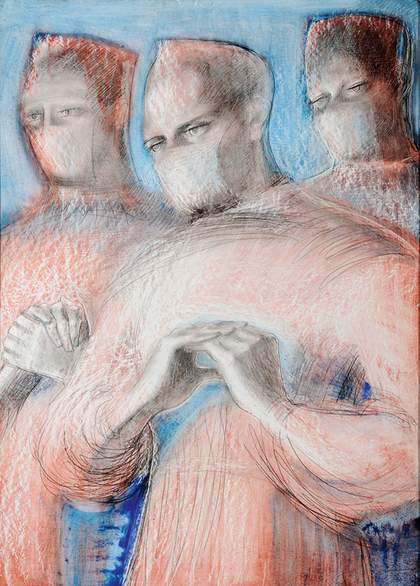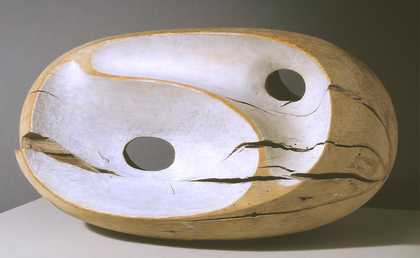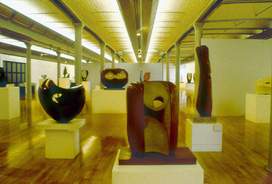The experience I had began as a result of a chance remark by a surgeon that I should be very interested in watching what went on in a hospital theatre. My first reaction was one of horror and, indeed, I was so ill-informed that it seemed to me a grim idea that I, as an artist, should find anything beautiful in watching surgery; but the idea seemed a challenge, and eventually, with some reluctance (and, by the way, detailed provision for a speedy exit if necessary!), I entered an operating theatre to watch, for the first time, a reconstruction of a hip.
From the very first moment I was entirely enthralled by the classic beauty of what I saw there; classic in the sense that architecture and function were perfectly blended and purity of idea and grace of execution were in complete harmony.
For three years I was fortunate in being able to work in many operating theatres here in the West Country and in London – at the London Hospital, the Royal National Orthopaedic Hospital and at the London Clinic. Throughout this time I was being enriched as an artist by the experience of watching these various surgeons at work, not only by the visual impact but also by the mental (or should I say spiritual) meaning of a group of people working harmoniously for a given purpose. It ratified, moreover, my previous ideas as a sculptor, of the basic principles of the abstract composition, rhythm, poise, and equilibrium which is inherent in human activity when the mind wholly governs the body for the fulfilment of an unselfish end.

Barbara Hepworth
Skiagram 1949
Oil and pencil
54.6 x 36.8 cm
There is, it seems to me, a very close affinity between the work and approach both of physicians and surgeons, and painters and sculptors. In both professions we have a vocation and we cannot escape the consequences of it. The medical profession, as a whole, seeks to restore and to maintain the beauty and grace of the human mind and body; and, it seems to me, whatever illness a doctor sees before him, he never loses sight of the ideal, or state of perfection, of the human mind and body and spirit towards which he is working.
The artist, in his sphere, seeks to make concrete ideas of beauty which are spiritually affirmative, and which, if he succeeds, become a link in the long chain of human endeavour which enriches man’s vitality and understanding, helping him to surmount his difficulties and gain a deeper respect for life.
The abstract artist is one who is predominantly interested in the basic principles and underlying structures of things, rather than in the particular scene or figure before him; and it was from this viewpoint that I was so deeply affected by what I saw in the operating theatre.


